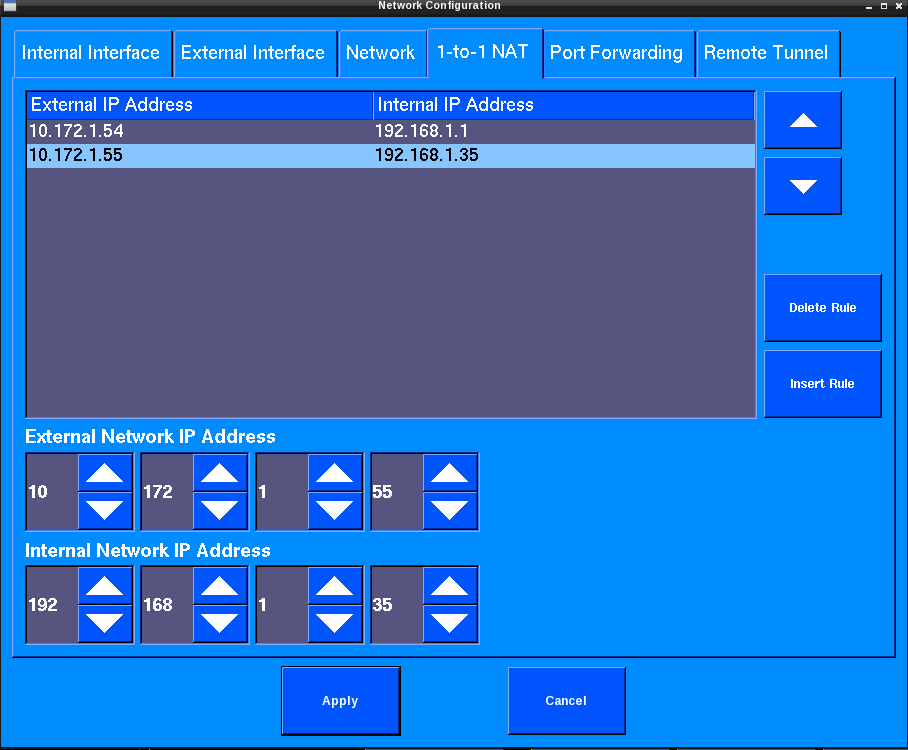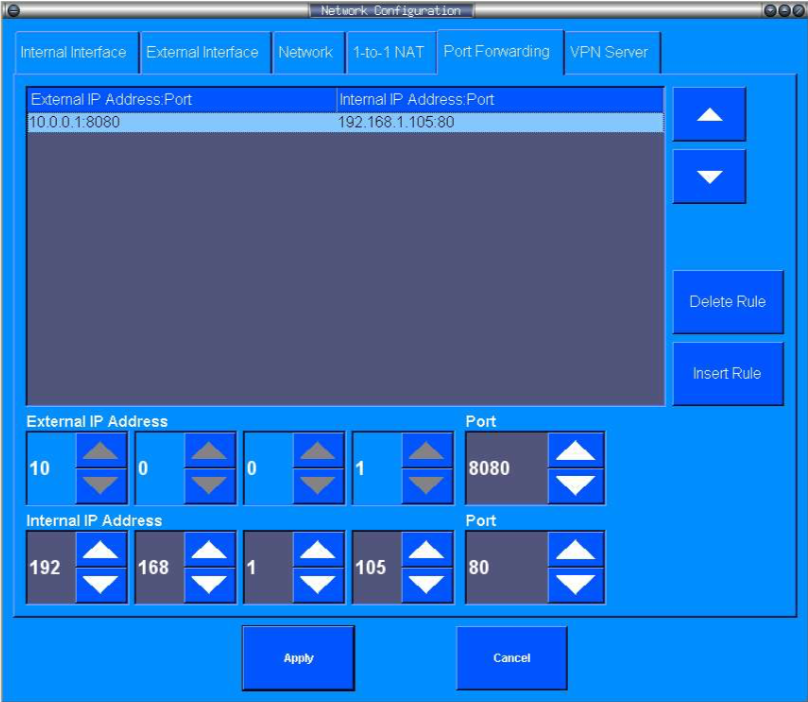# Networking
TIP
OI-Windows relies on Window's system configuration. The following information does not apply.
# Network Hardware
OI Screens provide 3 network interfaces:
| OI System ID | Connector Label | LED Label |
|---|---|---|
| eth0 | Lan 1 | Act 1 |
| eth1 | Lan 2 | Act 2 |
| wlan0 | - | - |
# Internal Interface
The internal interface is configured for use within the local machine's network. Typically, this is connected to a switch which is also connected to the PLC.
The internal interface can be set to communicate to the following hardware:
- none: disables internal interface
- eth0: Uses eth0 (Lan 1 connector) for communication
- eth0+eth1 bridged: Uses eth0 (Lan 1) for internal network, and allows using eth1 (Lan 2) as a programming port - communications are passed through/bridged.
# External Interface
The external interface is typically configured for connecting to the plant's network (sometimes called the Wide Area Network, WAN, or WLAN).
The external interface can be set to communicate to the following hardware:
- none: disables internal interface
- eth1: Uses eth1 (Lan 2 connector) for communication
- wlan0: Uses WIFI for communication.
TIP
When using bridged interface on Internal Interface, the External Interface will only allow none or wlan0.
# Networking Setup
# Bridged Interfaces
When the internal interface is set to bridge, eth1 (Lan 2) will act as a passthrough to eth0 (Lan 1). This will effectively make the 2nd ethernet connection a programming port to the machine.
TIP
When using bridged interface on Internal Interface, the External Interface will only allow none or wlan0.
# Network Settings
The network settings tab allows you to define DNS and Gateway addresses. If any of the interfaces are set to DHCP, the Gateway must be set to 0.0.0.0.
TIP
The gateway address is the IP address the screen will try to use if it is asked to communicate with IP's outside it's local network (as defined by it's ip address and netmask).
# Internal/External Configuration Types
The network interfaces can be set to static IP addresses or use DHCP. If using DHCP, you can use the Hardware Configuration window to see the current network settings.
# Networking Features
# 1-to-1 Nat
The OI screen provides 1-to-1 Network Address Translation (1-to-1 Nat) services. When configured, the OI can provide access to devices on it's internal network to the outside network.
The primary use is to allow certain devices on the internal network to be visible to devices on the external network. The internal network is used for local communication where the external network is usually connected to a plant network. Isolating certain devices to the internal network reduces network traffic and clutter on the external network.

# When to Use
1-to-1 Nat is useful for duplicate cells with identical IP Addresses. 1-to-1 NAT allows a rule to be inserted to map individual devices to the external network at an address supplied by the plant. Network traffic is reduced by not mapping Ethernet IP Devices on the local network that do not need to communicate with the external network. (e.g. Ethernet I/O Blocks, Ethernet Servos etc)
# Initial Setup
- Set Internal IP Address of Touchscreen.
- Set External IP Address of Touchscreen. (External IP Subnet must be different than Internal IP Subnet)
- Set Default Gateway of machine devices to the Internal IP Address of Touchscreen.
- Insert 1-to-1 NAT Rule for each device.
- Set Gateway of Each Device to Internal IP Address of Touchscreen.
# Common Issues
- Laptop is not in correct Subnet.
- Internal/External Ethernet Connections are swapped.
- Gateway of device was not set to Internal IP Address of Touchscreen.
- Subnet of Internal IP Address is the Same as Subnet of External IP Address.
# Example
| Device | Internal IP | External IP |
|---|---|---|
| Cell PLC | 192.168.1.1 | 10.172.1.54 |
| Cell HMI | 192.168.1.5 | 10.172.1.53 |
| Tooling Input Card | 192.168.1.11 | not accessible |
| Welder | 192.168.1.35 | 10.172.1.55 |
# Port Forwarding
The OI screen can provide network access to internal devices by configuring port forwarding. An external port can be mapped to a different, internal ip address/port and traffic will be routed accordingly.

# Remote Tunnel
The OI screen can provide a remote tunnel back to a service server at AIG. Settings for the server are configured here.
# FTP Access
OI files can be transfered using FTP by connecting to the OI as 'user' (no password needed).
# SCP (SFTP) Access
OI files can be transfered using SCP or SFTP by connecting to the OI as 'user' (no password needed).
TIP
OI-Windows does not come with ssh capabilities by default. An ssh server can be installed manually if needed.
# SSH Access
OI provides system level access using SSH to the terminal. This can be useful to troubleshoot hardware, scripts, or to access data on a damaged screen. Contact AIG for information about accessing SSH through OI.
TIP
OI-Windows does not come with ssh capabilities by default. An ssh server can be installed manually if needed.
# VNC Access
OI provides remote desktop access using VNC. Configure your desktop VNC software to connect to the IP of the OI screen to access. A password can be set in Config -> Display Configuration -> VNC.
TIP
OI-Windows does not come with remote desktop capabilities by default. A VNC server can be installed manually if needed.